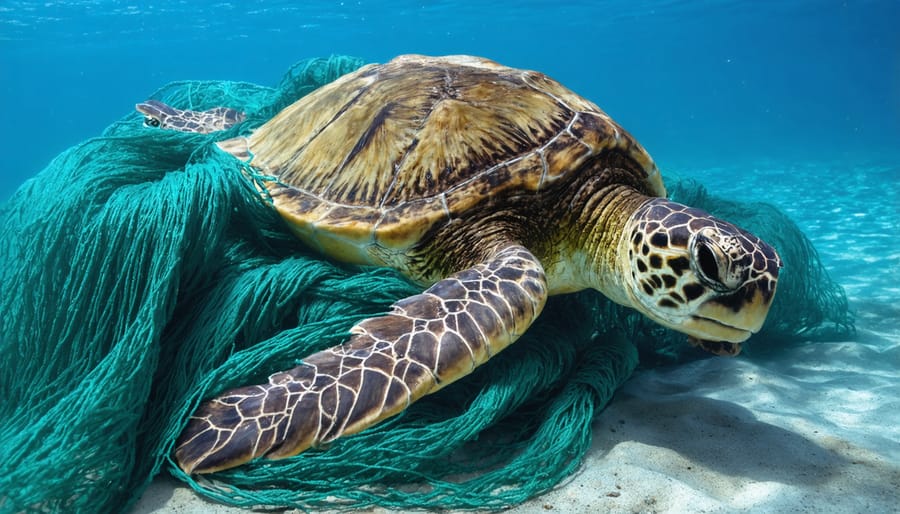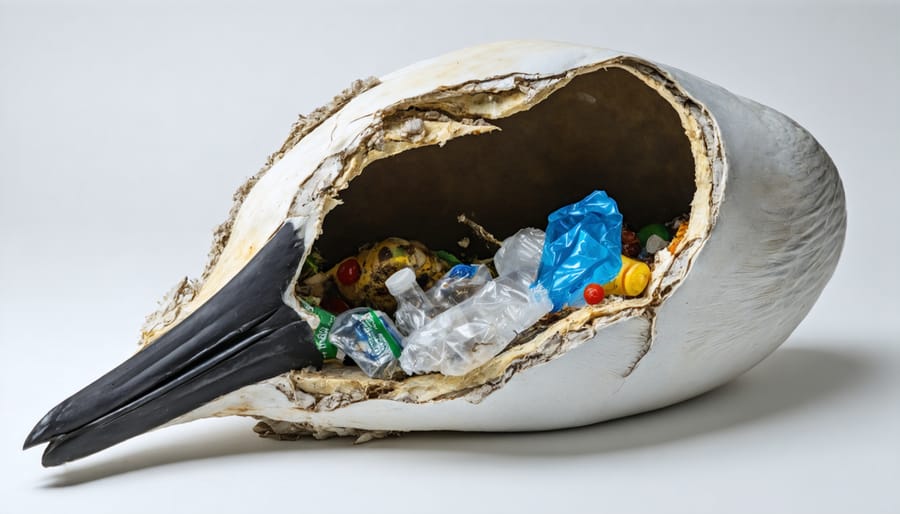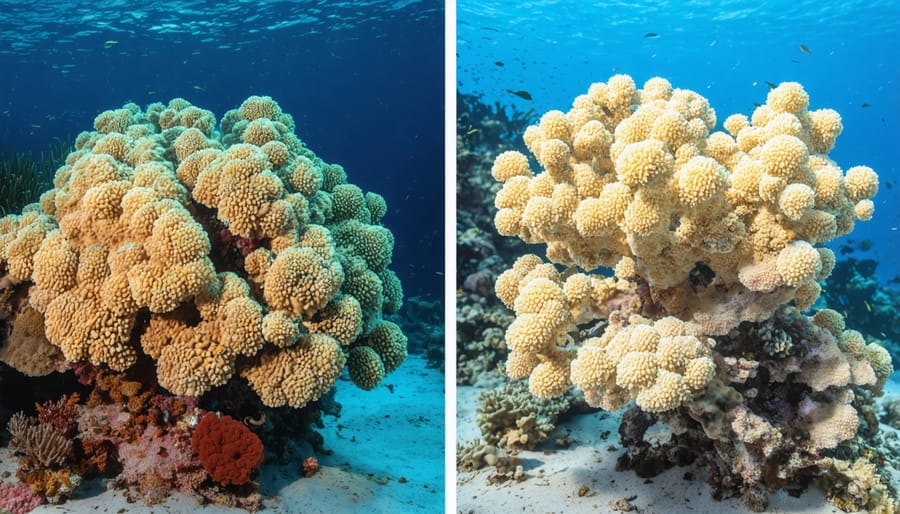
The oceans are under siege. Human activities are devastating marine ecosystems at an unprecedented rate, from the shallows to the deepest trenches. Overfishing, pollution, habitat destruction, and climate change are pushing many species to the brink of extinction. Coral reefs are bleaching, fisheries are collapsing, and vast gyres of plastic waste swirl through the currents. The very chemistry of the oceans is changing as they absorb excess carbon dioxide, becoming more acidic.
The scale and severity of human impacts on marine life is staggering – and the consequences will be catastrophic if left unchecked. Yet there is still hope, if we act swiftly and decisively. By confronting these threats head-on through research, conservation, and a fundamental shift in how we interact with the oceans, we can begin to heal the damage and restore balance to marine ecosystems. The road ahead is challenging, but with determination and international cooperation, a healthier future for our oceans is within reach. In the following article, we dive deep into the major ways human activities threaten marine life – and what we can do to turn the tide before it’s too late.
Overfishing and Bycatch
The Collapse of Commercial Fish Stocks
The collapse of commercial fish stocks is a sobering reality that has unfolded across the globe. One of the most notorious examples is the Atlantic cod fishery off the coast of Newfoundland, Canada. Once teeming with cod, this fishery experienced a catastrophic decline due to overfishing in the late 20th century. Despite warnings from scientists, fishing continued until the cod population plummeted by 99%, leading to a moratorium on fishing in 1992. The devastating domino effect of this collapse rippled through the ecosystem and local communities that relied on the fishery.
Similar stories have played out in other parts of the world. In the Mediterranean Sea, the bluefin tuna population has been pushed to the brink by overfishing driven by the high demand for sushi. Closer to home, the Chesapeake Bay’s oyster population, once a thriving industry, has been decimated by a combination of overharvesting, disease, and habitat loss. These case studies underscore the urgent need for sustainable fishing practices and the protection of critical marine habitats. By learning from these cautionary tales, we can work towards a future where our oceans are resilient and abundant.
The Devastating Impact of Bycatch
Bycatch, the unintentional capture of non-target species in fishing gear, is a devastating consequence of modern fishing practices. Marine animals such as dolphins, sea turtles, sharks, and seabirds often find themselves entangled in nets or hooked on longlines, resulting in injury or death. It is estimated that bycatch kills millions of marine creatures each year, contributing to the decline of many already threatened or endangered species.
Dolphins, known for their intelligence and social behavior, frequently fall victim to bycatch in gillnets and purse seine nets used to catch tuna and other fish. Turtles, including the critically endangered leatherback and loggerhead, drown after becoming entangled in shrimp trawls or ingesting baited hooks. Sharks, vital predators in marine ecosystems, are often caught on longlines targeting other fish species, with millions killed annually as bycatch.
The impact of bycatch extends beyond individual animal deaths; it disrupts the delicate balance of marine ecosystems. The loss of apex predators like sharks can lead to cascading effects on food webs, while the removal of key species can alter community structures and hinder the resilience of marine habitats. Urgent action is needed to implement bycatch reduction strategies and promote sustainable fishing practices to protect the incredible diversity of life in our oceans.

Pollution and Marine Debris

The Scourge of Plastic Pollution
Plastic pollution poses a grave threat to marine life, with an estimated 8 million tons of plastic waste entering our oceans each year. This debris, ranging from large items like fishing nets and bottles to microplastics invisible to the naked eye, can have devastating consequences for creatures across the marine ecosystem.
One of the most visible impacts is entanglement, where animals become trapped or ensnared in plastic debris. Sea turtles, for example, can become entangled in abandoned fishing gear, leading to injury, drowning, or starvation. Seabirds, like the albatross, are also vulnerable, with many dying after becoming caught in plastic waste.
Ingestion of plastic is another major concern. Many marine animals, from tiny zooplankton to giant whales, mistake plastic for food. Once consumed, plastic can cause blockages in the digestive system, leading to starvation and death. Microplastics, in particular, are easily ingested and can accumulate in the bodies of marine life, potentially entering the food chain and ultimately impacting human health.
The effects of plastic pollution are far-reaching and long-lasting. It’s estimated that plastic can take hundreds or even thousands of years to decompose, meaning the problem will persist for generations to come. As responsible stewards of the planet, it’s crucial that we take action to reduce our plastic consumption and properly dispose of waste to protect the incredible diversity of life in our oceans.
Chemical Contamination and Dead Zones
Chemical contamination and dead zones pose significant threats to marine life, with industrial runoff and agricultural nutrients being major contributors. Industrial facilities often discharge toxic chemicals such as heavy metals, PCBs, and pesticides into waterways, which eventually make their way to the ocean. These pollutants can accumulate in the tissues of marine organisms, leading to health issues, reproductive problems, and even death. For example, mercury contamination in fish can cause neurological damage in animals that consume them, including humans.
Agricultural runoff, rich in nutrients like nitrogen and phosphorus from fertilizers, flows into coastal waters and stimulates the growth of algae. While algae are a natural part of marine ecosystems, excessive growth can lead to harmful algal blooms (HABs). These blooms can produce toxins that harm marine life and even humans who consume contaminated seafood. HABs also deplete the water of oxygen as they decompose, creating hypoxic conditions that suffocate marine organisms.
The Gulf of Mexico is home to one of the world’s largest dead zones, primarily caused by nutrient pollution from the Mississippi River. This dead zone, which can span up to 6,000 square miles, is largely devoid of marine life due to the lack of oxygen. Many other coastal areas around the world, such as the Chesapeake Bay and the Baltic Sea, also experience dead zones as a result of nutrient pollution.
The impacts of chemical contamination and dead zones extend beyond the immediate area, as they disrupt food webs and alter the balance of marine ecosystems. For instance, the decline of a particular species due to contamination can have cascading effects on its predators and prey, leading to broader ecological consequences.
Addressing these issues requires a multi-faceted approach, including stricter regulations on industrial discharges, improved agricultural practices to minimize nutrient runoff, and increased monitoring of coastal waters. By reducing the input of toxic chemicals and excess nutrients into our oceans, we can help protect marine life and maintain the health of these vital ecosystems for future generations.
Climate Change and Ocean Acidification
Coral Bleaching and Reef Destruction
Coral reefs, the vibrant underwater ecosystems that teem with life, are facing an unprecedented crisis due to human-induced climate change. As the oceans absorb excess carbon dioxide from the atmosphere, the water becomes more acidic, making it harder for coral polyps to build their calcium carbonate skeletons. This process, known as ocean acidification, weakens the very foundation of coral reefs. Simultaneously, rising ocean temperatures are causing mass coral bleaching events, where the coral expels the symbiotic algae that provide its vibrant colors and essential nutrients. Without these algae, the coral becomes white and starves, often leading to widespread die-offs. The combination of acidification and bleaching has led to the loss of vast swaths of coral reefs worldwide, with some estimates suggesting that up to 90% of all coral reefs could be gone by 2050 if climate change’s alarming toll continues unabated. The destruction of coral reefs has far-reaching consequences for marine biodiversity, as these ecosystems provide shelter, food, and breeding grounds for countless species. It also threatens the livelihoods of millions of people who depend on healthy reefs for food, income, and protection from coastal erosion. Urgent action is needed to reduce greenhouse gas emissions and protect these invaluable marine treasures before it’s too late.

Shifting Species Distributions
As our planet’s climate continues to change due to human activities, marine species are being forced to adapt by shifting their geographic distributions. Rising ocean temperatures, altered currents, and changes in ocean chemistry are driving many species to relocate in search of more suitable conditions. This mass migration is disrupting delicately balanced marine ecosystems, with far-reaching consequences for biodiversity and ecosystem functioning.
One striking example of this phenomenon is the northward movement of many fish species as they seek cooler waters. In the North Atlantic, cod populations have shifted hundreds of kilometers northward over the past few decades, while in the Pacific, species like the Humboldt squid have expanded their range as far north as Alaska. These shifts can have cascading effects on the ecosystems these species leave behind and those they newly inhabit.
But it’s not just fish on the move. Marine mammals, seabirds, and even tiny plankton are all being affected. In the Southern Ocean, Antarctic krill, a keystone species that forms the base of many food webs, is projected to decline as its habitat shrinks due to warming waters. This could have devastating impacts on the many species that depend on krill, from penguins to blue whales.
As marine species continue to shift in response to climate change, it’s becoming increasingly clear that our oceans are undergoing a profound transformation. By taking action to mitigate climate change and protect marine habitats, we can help give these species the best chance of adapting to a changing world. It’s a daunting task, but with concerted effort and international cooperation, we can work towards preserving the incredible diversity of life in our oceans.
Coastal Development and Habitat Destruction
The Loss of Mangrove Forests and Seagrass Beds
Mangrove forests and seagrass beds are vital habitats that serve as nurseries for countless marine species, providing shelter, food, and protection for young fish, crustaceans, and other organisms. However, these essential ecosystems are rapidly disappearing due to coastal development, threatening the survival of the diverse marine life they support.
As human populations expand and urbanization intensifies, coastal areas are increasingly being transformed by the construction of harbors, resorts, and residential complexes. This development often involves the clearing of mangrove forests and the dredging of seagrass beds, destroying these vital habitats and disrupting the delicate balance of marine ecosystems.
The loss of mangrove forests and seagrass beds has far-reaching consequences for marine biodiversity. Without these nursery grounds, many species struggle to survive their early life stages, leading to declining populations and potential cascading effects throughout the food web. Additionally, these habitats play crucial roles in stabilizing coastlines, filtering water, and sequestering carbon, making their preservation essential for both marine life and human well-being.
To protect these invaluable ecosystems, it is crucial to prioritize sustainable coastal development practices that minimize habitat destruction and promote the restoration of degraded areas. By raising awareness about the importance of mangrove forests and seagrass beds and advocating for their conservation, we can help ensure a thriving future for the incredible diversity of life that depends on these vital habitats.
The Impact on Endangered Species
Human activities have had devastating consequences for many endangered marine species, with habitat loss posing a particular threat to iconic creatures like sea turtles and dugongs. Sea turtles, for instance, rely on pristine sandy beaches for nesting, but coastal development, pollution, and erosion have drastically reduced suitable nesting sites. Artificial lighting near beaches can also disorient hatchlings, leading them away from the safety of the ocean. Dugongs, gentle herbivores often referred to as “sea cows,” depend on healthy seagrass meadows for sustenance. However, these critical habitats are rapidly disappearing due to factors such as water pollution, sedimentation, and physical damage from boat traffic and fishing gear. As a result, dugong populations have plummeted in many regions, with some facing local extinction. The loss of these species not only diminishes the beauty and diversity of our oceans but also disrupts delicate ecological balances. Sea turtles, for example, play a vital role in maintaining healthy coral reefs and seagrass beds, while dugongs help to fertilize and regenerate seagrass meadows through their grazing activities. Protecting the habitats of these endangered species is crucial for their survival and the overall health of marine ecosystems. By addressing the root causes of habitat loss and implementing effective conservation measures, we can work towards a future where these magnificent creatures can thrive once more.
Solutions and Path Forward
While the challenges facing marine life may seem daunting, there are many steps we can take as individuals and as a society to mitigate our impact and protect these vital ecosystems. On a personal level, making conscious choices about the seafood we consume, opting for sustainably sourced options, and reducing our use of single-use plastics can make a significant difference. Supporting organizations dedicated to marine conservation efforts through volunteering or financial contributions is another powerful way to get involved.
At a societal level, we must push for stronger regulations and enforcement of laws protecting marine habitats and species. This includes establishing more marine protected areas, implementing stricter fishing quotas, and holding corporations accountable for their environmental impact. Investing in research and development of sustainable technologies, such as biodegradable materials and cleaner energy sources, is also crucial.
Education plays a vital role in fostering a culture of conservation. By integrating marine conservation into school curricula and promoting public awareness campaigns, we can inspire the next generation to become stewards of our oceans. Together, through individual actions and collective advocacy, we have the power to create a brighter future for marine life and the countless species that call our oceans home.
jessica
Ava Singh is an environmental writer and marine sustainability advocate with a deep commitment to protecting the world's oceans and coastal communities. With a background in environmental policy and a passion for storytelling, Ava brings complex topics to life through clear, engaging content that educates and empowers readers. At the Marine Biodiversity & Sustainability Learning Center, Ava focuses on sharing impactful stories about community engagement, policy innovations, and conservation strategies. Her writing bridges the gap between science and the public, encouraging people to take part in preserving marine biodiversity. When she’s not writing, Ava collaborates with local initiatives to promote eco-conscious living and sustainable development, ensuring her work makes a difference both on the page and in the real world.
